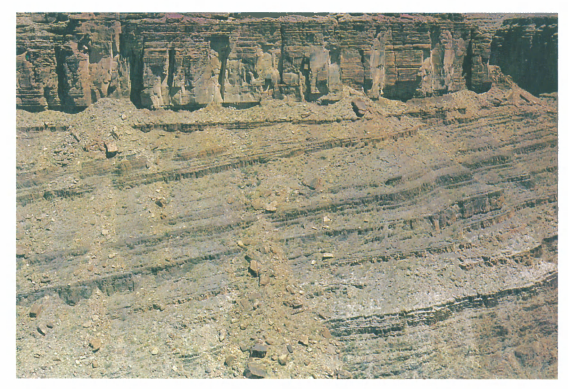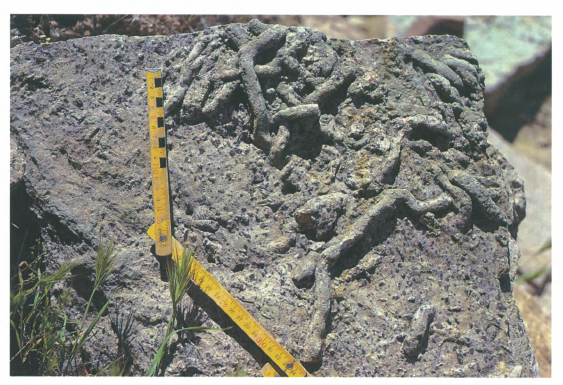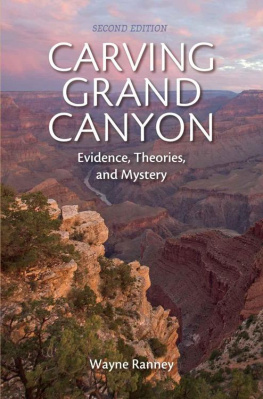Euler Robert C. (EDT) - Grand Canyon : Intimate Views
Here you can read online Euler Robert C. (EDT) - Grand Canyon : Intimate Views full text of the book (entire story) in english for free. Download pdf and epub, get meaning, cover and reviews about this ebook. year: 2015, publisher: Arizona Board of Regents, genre: Art. Description of the work, (preface) as well as reviews are available. Best literature library LitArk.com created for fans of good reading and offers a wide selection of genres:
Romance novel
Science fiction
Adventure
Detective
Science
History
Home and family
Prose
Art
Politics
Computer
Non-fiction
Religion
Business
Children
Humor
Choose a favorite category and find really read worthwhile books. Enjoy immersion in the world of imagination, feel the emotions of the characters or learn something new for yourself, make an fascinating discovery.
- Book:Grand Canyon : Intimate Views
- Author:
- Publisher:Arizona Board of Regents
- Genre:
- Year:2015
- Rating:4 / 5
- Favourites:Add to favourites
- Your mark:
- 80
- 1
- 2
- 3
- 4
- 5
Grand Canyon : Intimate Views: summary, description and annotation
We offer to read an annotation, description, summary or preface (depends on what the author of the book "Grand Canyon : Intimate Views" wrote himself). If you haven't found the necessary information about the book — write in the comments, we will try to find it.
Grand Canyon : Intimate Views — read online for free the complete book (whole text) full work
Below is the text of the book, divided by pages. System saving the place of the last page read, allows you to conveniently read the book "Grand Canyon : Intimate Views" online for free, without having to search again every time where you left off. Put a bookmark, and you can go to the page where you finished reading at any time.
Font size:
Interval:
Bookmark:

I t can be a humbling experience to descend to the canyon floor and stand among ancientrocks: they speak of a time eons before humans appeared, when the earth was youngand nearly barren of life, when the crust of North America was just being formed.The twisted and contorted bands of the oldest rocks along the Inner Gorge are probablythe roots of an ancient mountain system that once stood miles high near the edgeof our primeval continent.
The rocks and landscapes of the Grand Canyon present a marvelous revelation of theearths history perhaps unmatched elsewhere on the surface of our planet. The exposedrecord spans nearly 2 billion years beginning with the formation of the oldest basementrocks of the Inner Gorge and continuing with the canyon excavation in progress.
From selected viewpoints on the South Rim of the eastern Grand Canyon a visitor cansee in one view outcrops of four great groups of rock: (1) the metamorphic and igneousrock complex of the Inner Gorge, (2) the tilted stack of sedimentary layers calledthe Grand Canyon Supergroup, (3) the horizontal stack of Paleozoic sedimentary rocksforming the upper 4,000 feet of the canyon walls, and in the distance to the east,(4) the escarpments and mesas of Mesozoic strata that once covered the Grand Canyonregion. Small isolated remnants of the latter still perch along the canyon rim.
The oldest rocks are best exposed along the thousand-foot walls of the Inner Gorgebetween Hance Rapids (about river mile 77) and Elves Chasm (near mile 117). Theserocks are the greenish-black schist of the Vishnu Metamorphic Complex, associatedwith smaller pods of lighter granite gneiss and intrusions of pink or white graniteof the Zoroaster Plutonic Complex. Deep burial and prolonged pressure formed theVishnu by metamorphosing the original sedimentary and volcanic rocks into mica-richschist and gneiss. The granite records the cooling and crystallizing of magma (moltenrock material) that formed deep in the crust of the earth and was injected into theVishnu about 1.7 billion years ago. The Vishnu is clearly older than the intrudinggranite: exactly how old we may never know but probably on the order of 2 billionyears.
Following the deformation and uplift of the Vishnu, erosion wore down and removedmost of these rocks and produced a nearly level plain in the Grand Canyon regionat the western edge of North America. About 1.2 billion years ago shallow seas beganperiodically flooding across this plain, and deposits of sand and silt (and locally,lime mud) buried the old erosion surface. That buried surface, called the great unconformityby John Wesley Powell, sharply truncates the Vishnu and represents, as do all unconformities,a time of erosion and non-deposition, in this case nearly half a billion years oftime!
The strata above the great unconformity constitute the Grand Canyon Supergroup andare best exposed in the big bend area of the eastern Grand Canyon between river mile64 (Lees Ferry is mile 0) and Hance Rapids. More than 12,000 feet of sedimentaryrocks form the Supergroup and record deposition on deltas, on tidal flats, and inshallow marine environments during the Proterozoic Era (about 1.2 to 0.8 billionyears ago). At the top of the Unkar Group strata, which make up the lower half ofthe supergroup, is an 800-foot-thick section of basaltic lava flows, the CardenasLava, which have been radiometrically dated to about 1.1 billion years ago.

Geologic strata of the GrandCanyon
Limestone and dolomite layers in the Grand Canyon Supergroup contain some gentlyarched or hemispherical fossils called stromatolitessome the size and shape of acabbage headformed by blue-green algae in tidal flats or shallow marine environments.These oldest traces of life in the Grand Canyon closely resemble the oldest tracesof life found anywhere on earth, such as those in rocks of Africa that are nearly3.5 billion years old. The Grand Canyon stromatolites are most extensively preservedin the Bass Limestone, the basal formation of the Supergroup, and in the KwaguntFormation of the Chuar Group (exposed only in Chuar Valley north and west of theColorado River at the big bend).
In late Proterozoic time the strata of the Grand Canyon Supergroup were upliftedand broken by faults into a series of tilted blocks with long slopes and steep escarpmentsmuch like the present-day mountain blocks of Nevada. Another prolonged episode oferosion reduced these mountain blocks, making the tallest only 800 feet. Anothergreat unconformity separates with angular discordance the tilted Proterozoic stratabeneath from the younger horizontal Paleozoic strata above.
Soon after the beginning of the Paleozoic era, some 570 million years ago, shallowseas again flooded slowly across northern Arizona from west to east. The lowestdeposits of this Cambrian-period marine transgression are the gravel and sand ofthe Tapeats Sandstone. These sediments grade upward into the Bright Angel Shale andstill higher into the Muav Limestone and record the shallow sea having moved eastwardacross the interior of the continent, depositing sediments as it went.
The fossil record is suddenly richer and more clear, for by this time a multitudeof different animals such as trilobites and brachiopods, with hard preservable exoskeletons,had appeared. In addition, a variety of mostly unknown creatures left strange crawling,feeding, and burrowing traces in the soft mud of the sea floor. These trace fossilsare now extensively preserved in the Bright Angel Shale of the Grand Canyon.

Angular unconformity in theGrand Canyon Supergroup (Photograph, by, Stanley, Beus)
One hundred forty million years of erosion or nondeposition followed the Cambriandeposition record, and this pattern of gentle subsidence and deposition followedby gentle uplift and mild erosion occurred repeatedly through much of the Paleozoicand Mesozoic eras in northern Arizona. The rock and fossil record of the Paleozoicportion of those episodes is richly preserved in the upper 4,000 feet of the canyonwall. The widespread layers of the Redwall Limestone and adjacent formations ofthe same age record shallow marine conditions in a sea that extended from Canadato Mexico across the western interior of North America and swarmed with corals, lacybryozoans, brachipods, crinoids, and other invertebrate animals as well as algae,sharks, and fish. The equally fossiliferous but narrowly restricted Surprise CanyonFormation above the Redwall indicates that these marine creatures lived in a long,narrow estuary across the Grand Canyon region.

Trace fossils in the Bright Angel Shale (Photograph by Stanley Beus)
The layers forming the upper 2,000 feet of the canyon wall record even more dramaticvariations in environment, from sea to desert. Thus, the redbeds of the Supai Groupand Hermit Shale indicate marginal marine to coastal plain conditions (and locally,coastal swamps). The bright yellowish-gray Coconino Sandstone records the spreadof windblown sand dunes across Arizona for several million years, with tracks offour-footed reptiles or amphibians often seen on the dunes.
The uppermost two formations, the Toroweap and Kaibab, record another two major transgressionsand regressions of the sea, culminating in the fossiliferous limestone deposits ofthe Kaibab Formation, the rimrock of the Grand Canyon. The end of the Paleozoic recordis marked by yet another major unconformityan erosion surface representing about15 million yearsbetween the top of the Kaibab Formation and the base of the overlyingredbeds of the Moenkopi Formation of the Triassic Period, seen to the north and eastof the Grand Canyon.
Font size:
Interval:
Bookmark:
Similar books «Grand Canyon : Intimate Views»
Look at similar books to Grand Canyon : Intimate Views. We have selected literature similar in name and meaning in the hope of providing readers with more options to find new, interesting, not yet read works.
Discussion, reviews of the book Grand Canyon : Intimate Views and just readers' own opinions. Leave your comments, write what you think about the work, its meaning or the main characters. Specify what exactly you liked and what you didn't like, and why you think so.









